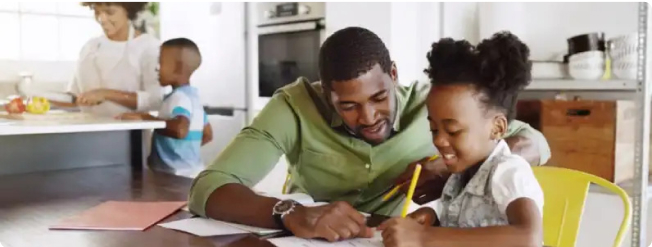Find out if you could be a foster carer
In a few simple questions, you’ll know if you’re suitable to apply to become a foster carer.
Staying Put is when a young person in foster care continues to live with their foster carer after their 18th birthday, often until their 21st. It’s not a type of fostering, though we do work with local authorities to facilitate this type of arrangement for our foster carers.
Staying Put provides the opportunity for a young person in foster care to get into or continue education and training. It also gives them more time to make the transition into adulthood and independent living.
It’s a different type of arrangement than fostering. The young person will no longer be a foster child – they are a young adult and a care leaver who is living with their former foster carer.
The process of creating a Staying Put arrangement begins with a needs assessment that will be used to create a Pathway Plan. Their social worker will conduct this assessment just after their 16th birthday, or when they and the child agree the time feels right.
This plan is the roadmap to independent living; it identifies what the foster child’s goals are, who or what can support these, and identify and fill any gaps. Staying Put might be identified as an option at this stage. It will be included in the Pathway Plan if it’s in the young person’s interest and if they and their foster carer both want it to happen.
If you’ve developed a close emotional bond with your foster child, you’re not alone. The idea of Staying Put isn’t a new concept – historically, many foster children continued to live with their foster families after the age of 18 with an informal arrangement.
However, since 2014, Staying Put has been recognised in law. This means local authorities are obliged to support both of you – the former foster child and the former foster carer – for the placement’s duration.
For you, this might include a Staying Put allowance (a bit like the fostering allowance) to help you cover costs.
You’ll also continue to be supported in some form by the independent fostering agency (like us) that you’re registered as a foster carer with. Things can continue as they always have, with the same number of visits and level of support you’re used to.
However, every case is different – for example, everyone might be comfortable with slightly fewer social worker visits, and so on.
You might already have other foster children staying with you. Or, you might have a spare room and decide now’s the time to put yourself forward for another. Your former foster child will now need to have the standard background check all foster family members must have.
Vince made the brave decision himself at the age of 14 that he wanted to go into foster care because his mum wasn’t coping.
His foster carers, Jennifer and Michael, built strong relationships of trust with him. He started knuckling down at school and followed his dream of joining the Army.
His new self-confidence and growing self-awareness led him to a role he wanted with the Royal Corps of Signals. When he left, his foster parents told him he could spend all his home leave at their house.
“It’s my home now,” he said. Read Vince’s touching story in full.

